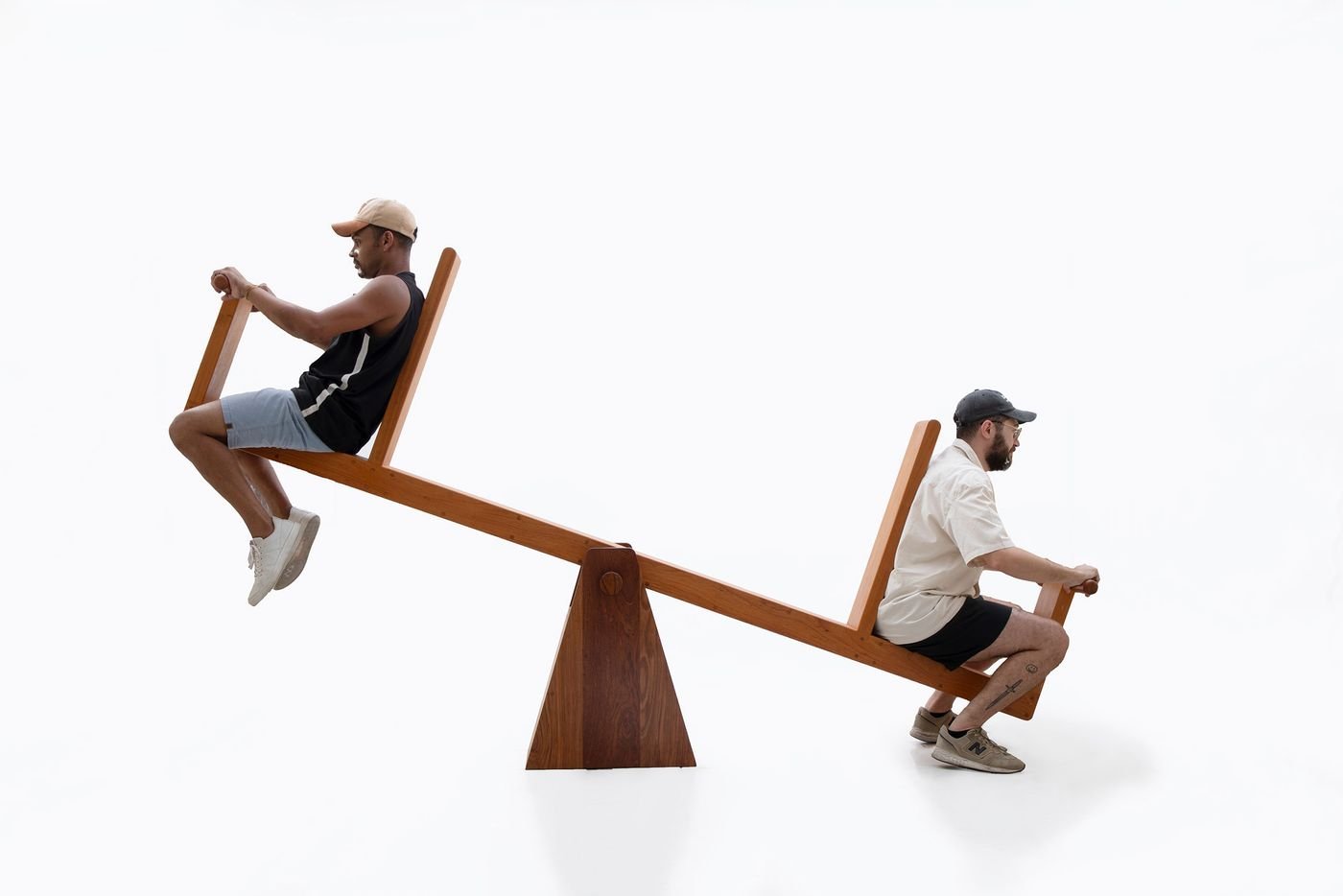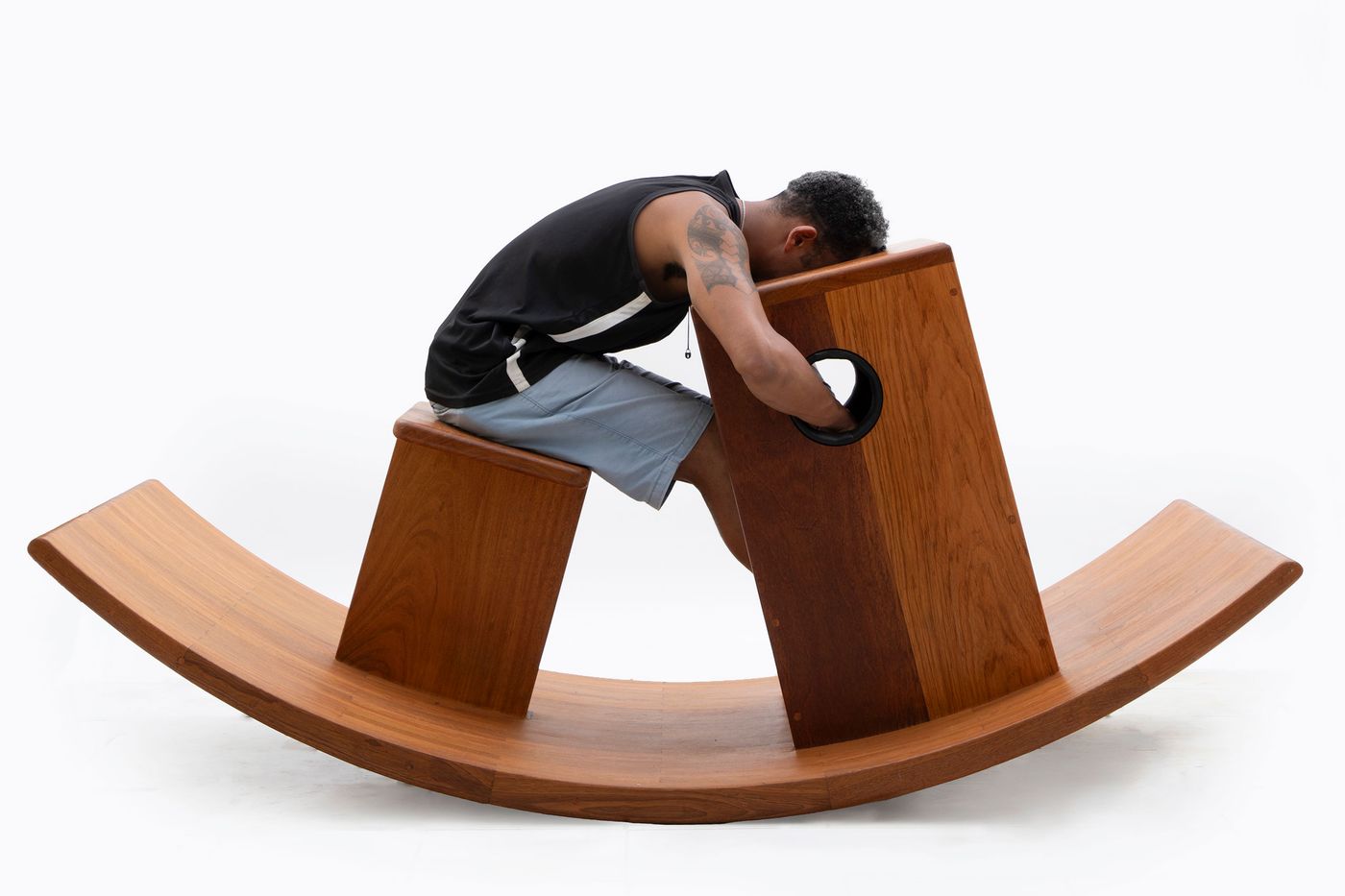
ANTIFURNITURE: A Series of Performative Sculptures in London's Design Museum Taps into our Everyday Fears
Words by Eric David
Location
London, United Kingdom
ANTIFURNITURE: A Series of Performative Sculptures in London's Design Museum Taps into our Everyday Fears
Words by Eric David
London, United Kingdom
London, United Kingdom
Location
Visitors to London’s Design Museum this October will encounter a series of offbeat structures that they can climb in, lie on, or hide within – some by themselves, others in pairs or in threes – participating, in effect, in a collective performance. Blurring the line between furniture, playground equipment and sculpture, the aptly named ANTIFURNITURE series is the latest project by Russian-born, Brazilian performance artist Fyodor Pavlov-Andreevich, designed in collaboration with New York-based architects Noam Dvir and Daniel Rauchwerger of architecture and interiors practice BoND.
Scattered throughout the atrium, mezzanine and garden, the eight wooden sculptures take on familiar forms such as a bunk bed, hammock and rocking horse, and yet when engaging with them visitors soon realise that there’s something profoundly strange going on. You may have to twist your body to fit in, find yourself lying upside down or forced to look a stranger in the face – if the latter reminds you of Marina Abramovic’s performances, then you’re on to something: Fyodor is Abramovic’s long-time collaborator. Offering an experience likened by the artist to being “lost somewhere between the amusement park and an airport security checkpoint”, ANTIFURNITURE challenges our understanding of comfort, inviting you to reflect upon and confront your fears.
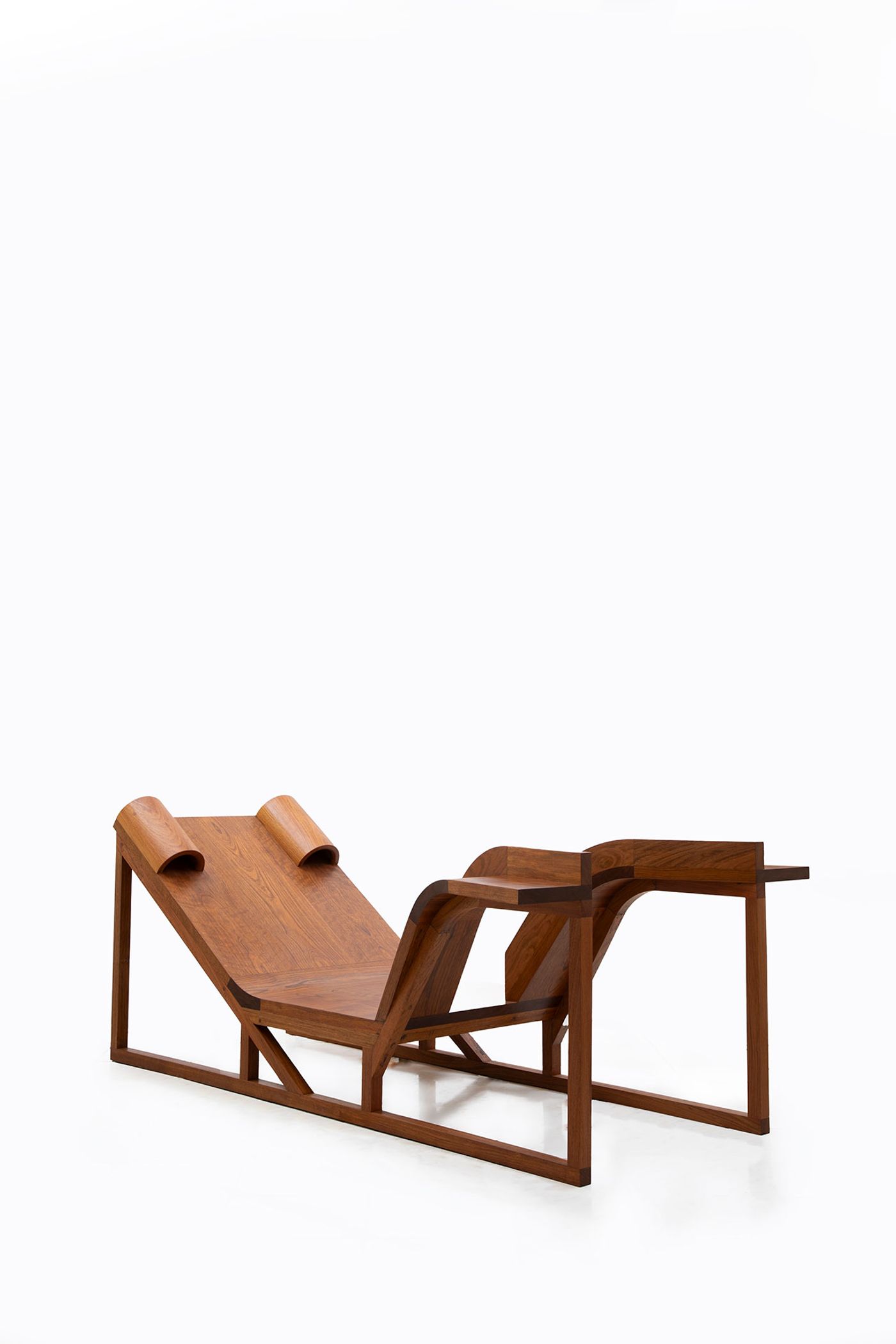
Leg Opener. Photography by Ruy Teixeira.
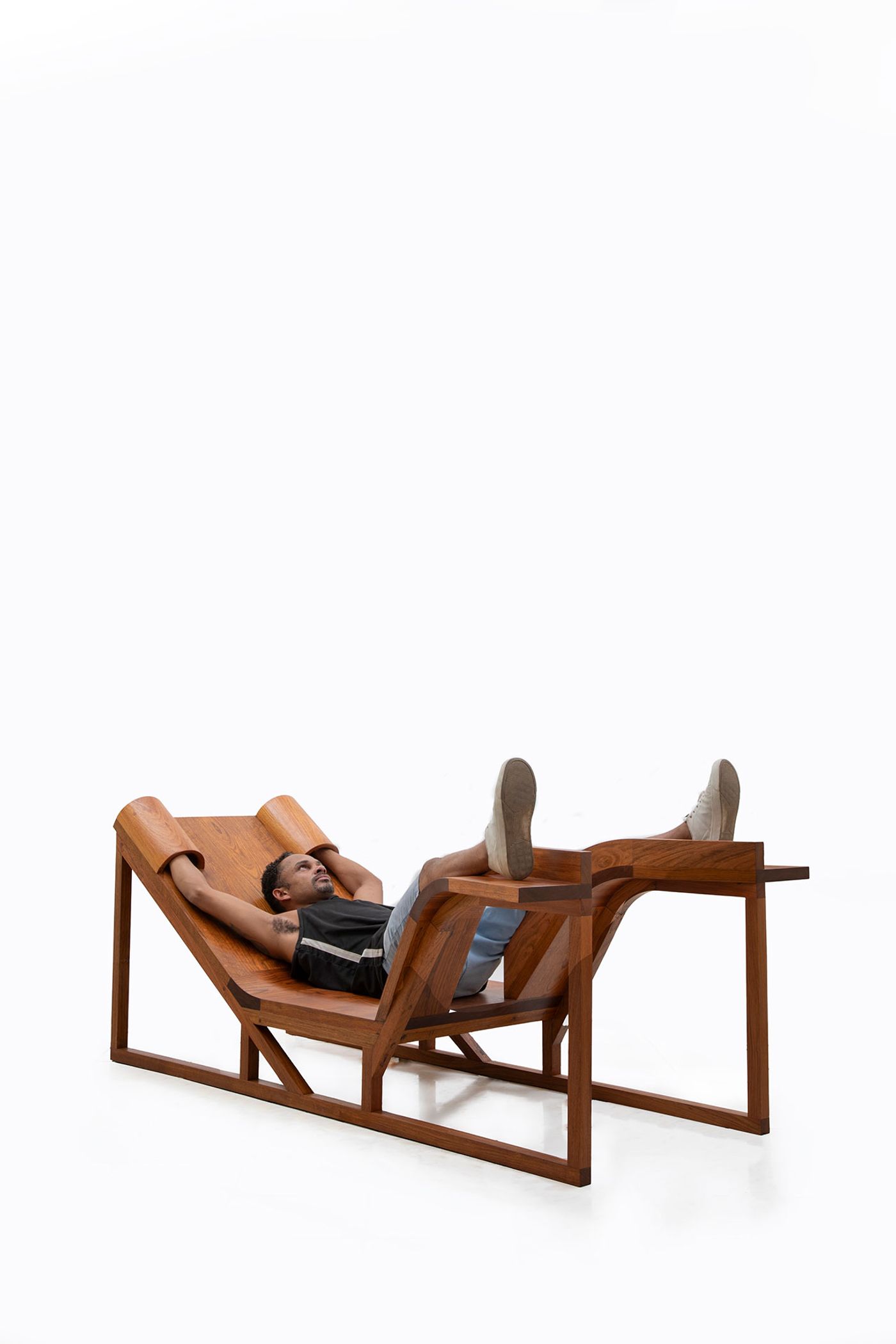
Leg Opener. Photography by Ruy Teixeira.
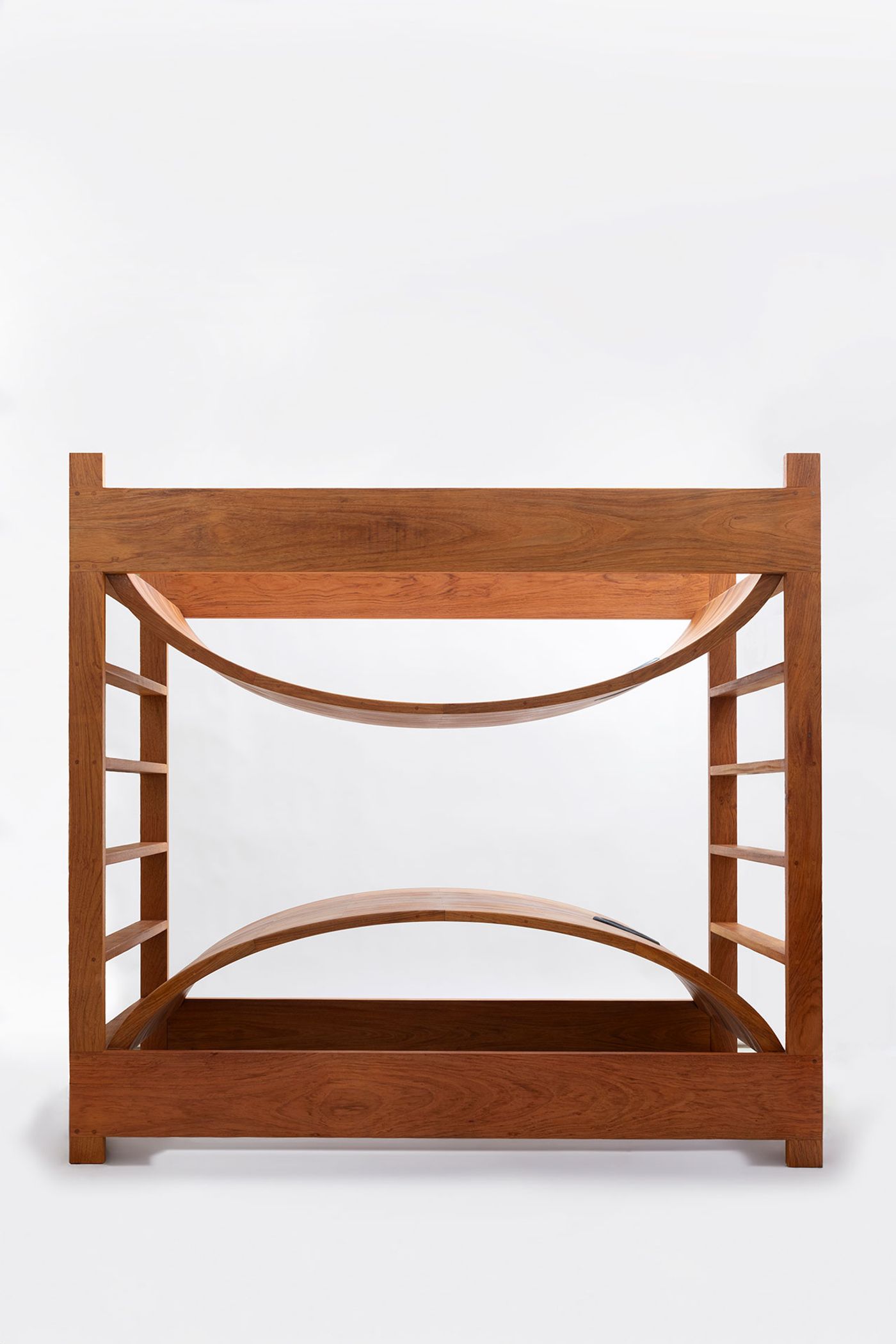
Bunker Bed. Photography by Ruy Teixeira.
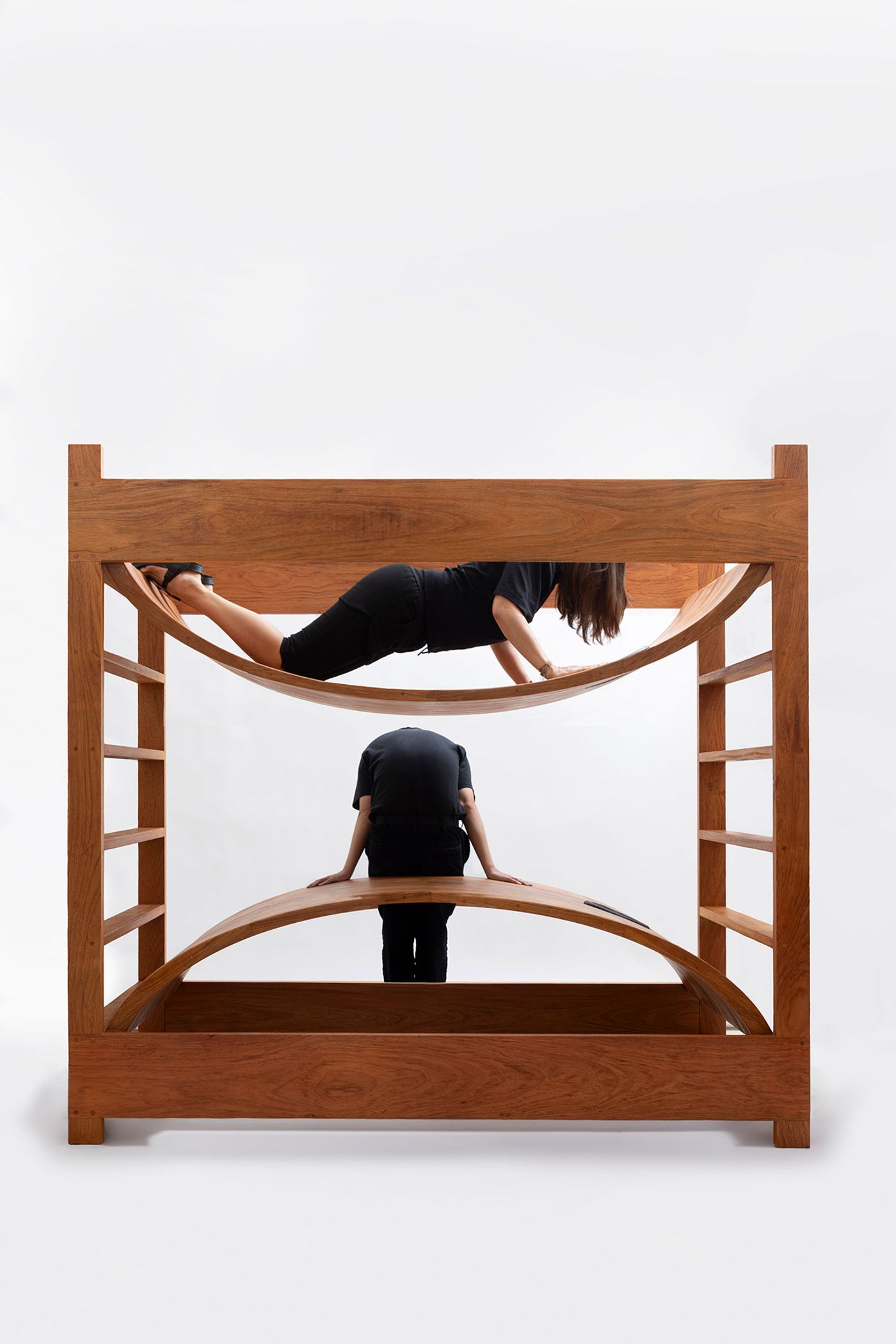
Bunker Bed. Photography by Ruy Teixeira.
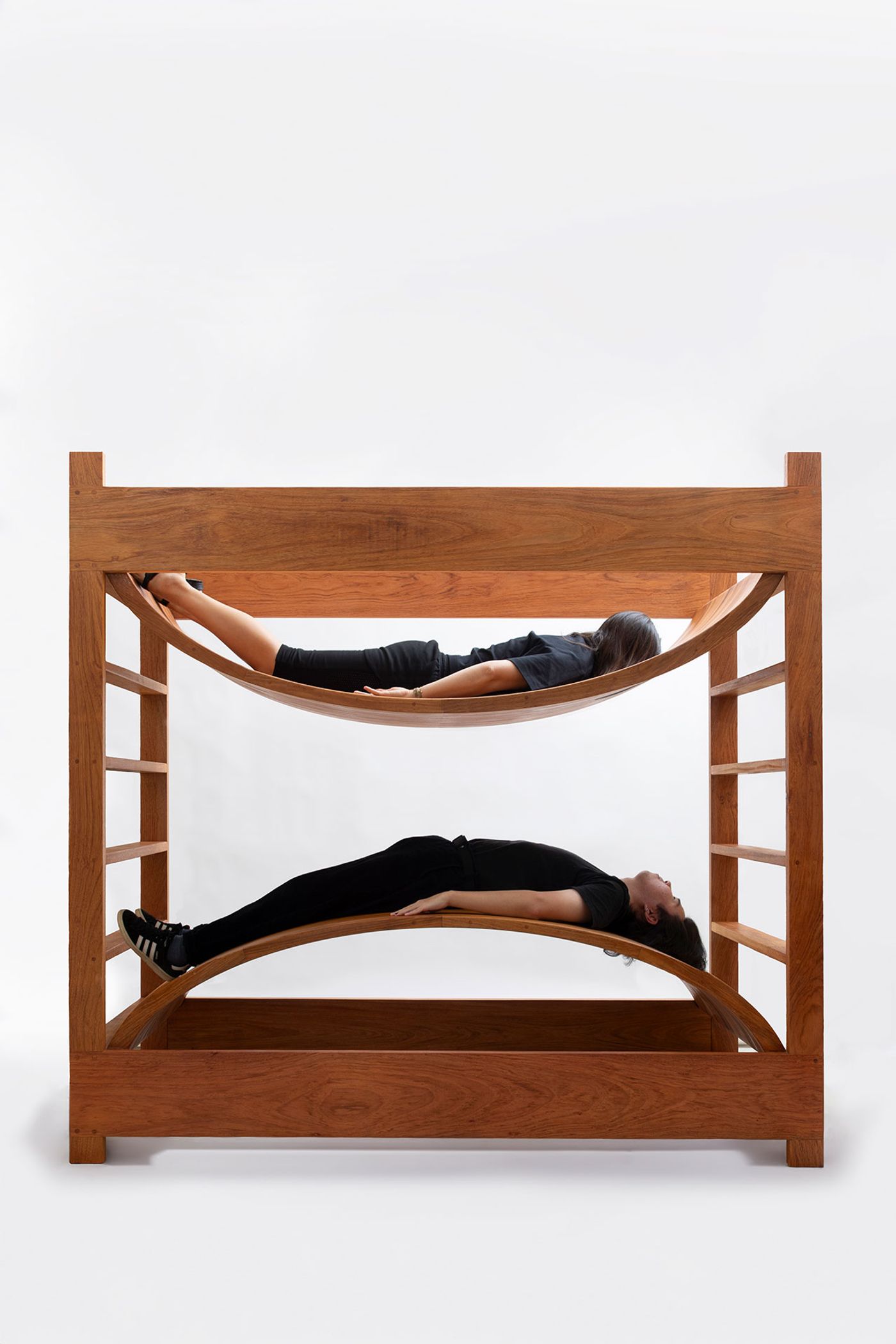
Bunker Bed. Photography by Ruy Teixeira.
Fyodor is no stranger to subversive, thought-provoking work having courted the spotlight with his guerrilla performances, including one in which he was wrapped in a carpet and suspended from a building on Dover Street in London in defence of the LGBTQ+ community in Chechnya. Most famously, he was dropped naked, wedged inside a clear plastic box, in front of New York’s Met Gala to draw attention to the diminished importance of performance art in the art world – a stunt that landed him in jail after firefighters had to cut him out.
Unlike all of his previous work where his body took centre stage, in ANTIFURNITURE, the artist’s own physicality is now replaced by that of the museum’s visitors who temporarily inhabit the sculptures by sitting, climbing, dangling, rocking or lying on them. The culmination of a three-year project evolution, each sculpture represents one or more phobias, which visitors are forced to face through physical discomfort and purposeful endurance. At the same time, the discomfort speaks to the social and psychological problems of modern society.
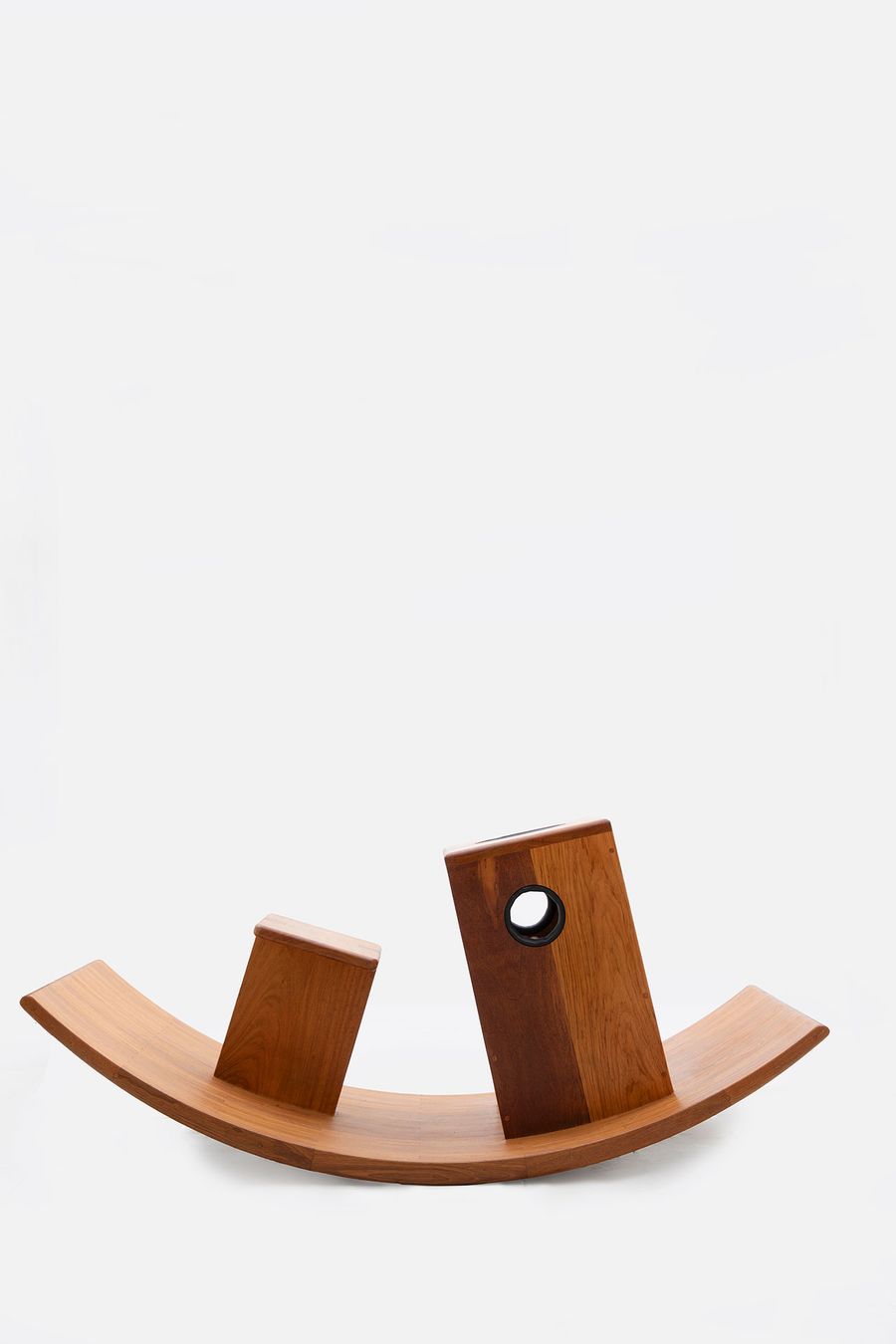
Rock n' Desk. Photography by Ruy Teixeira.
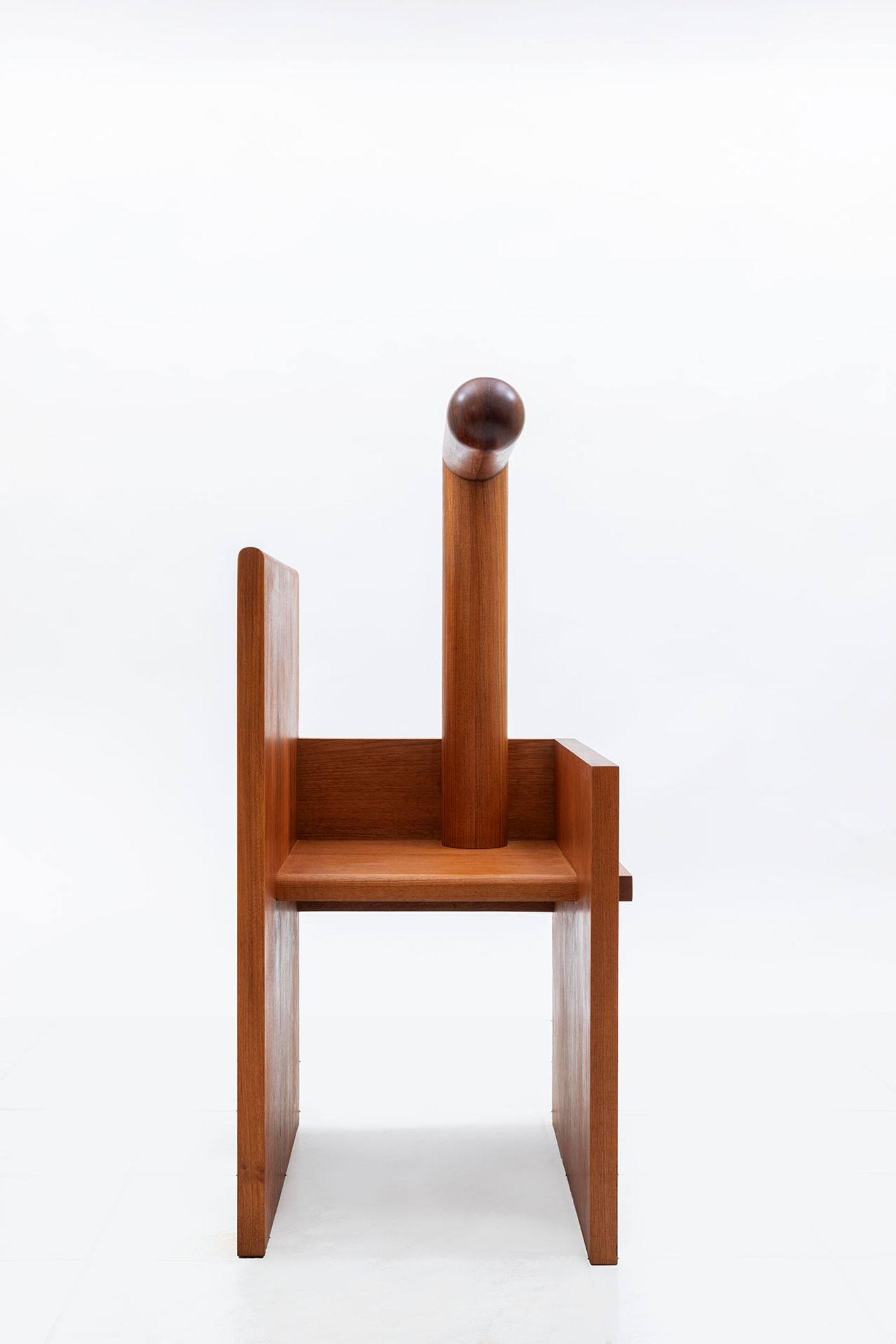
Lord of the Fishes. Photography by Ruy Teixeira.
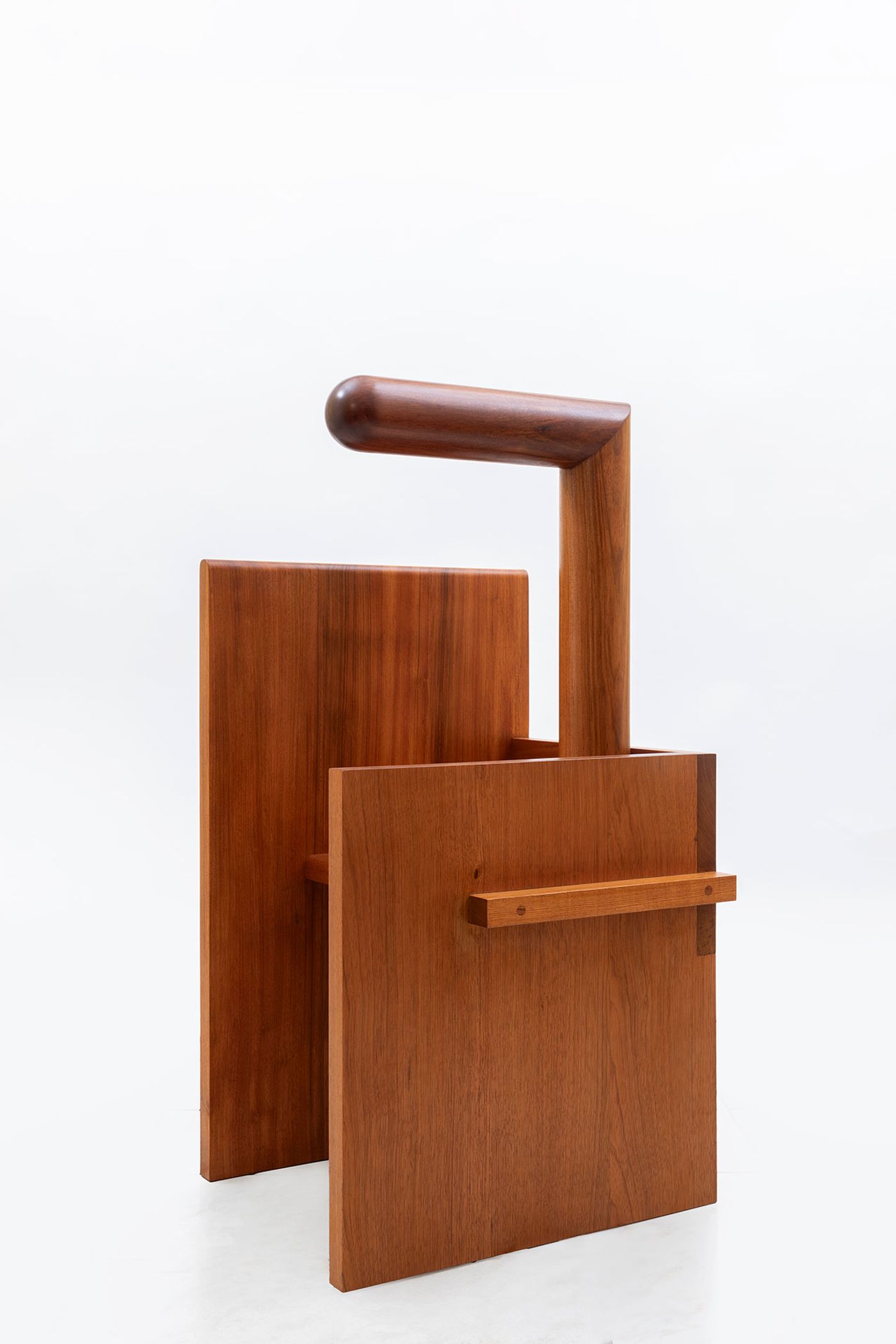
Lord of the Fishes. Photography by Ruy Teixeira.
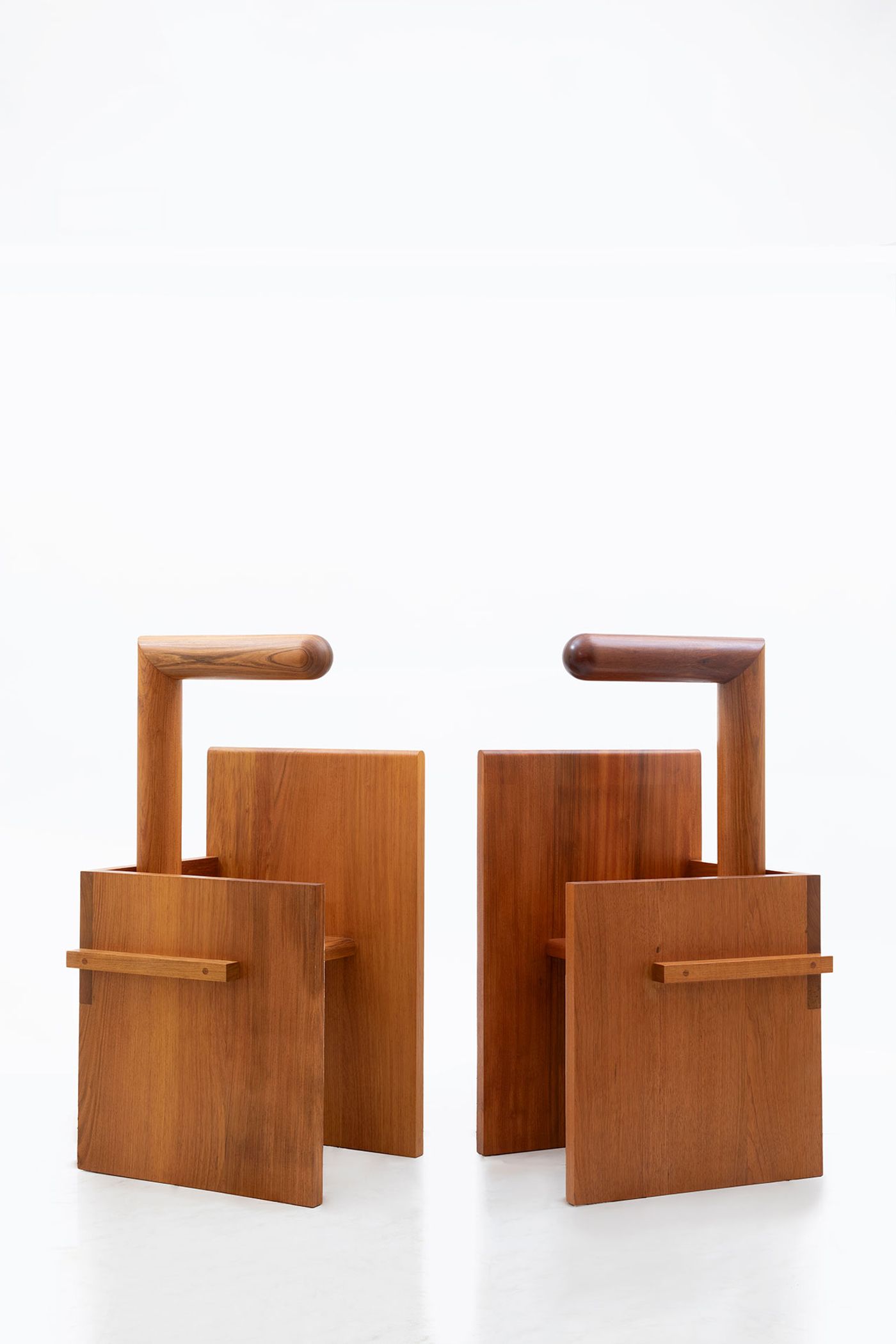
Lord of the Fishes. Photography by Ruy Teixeira.
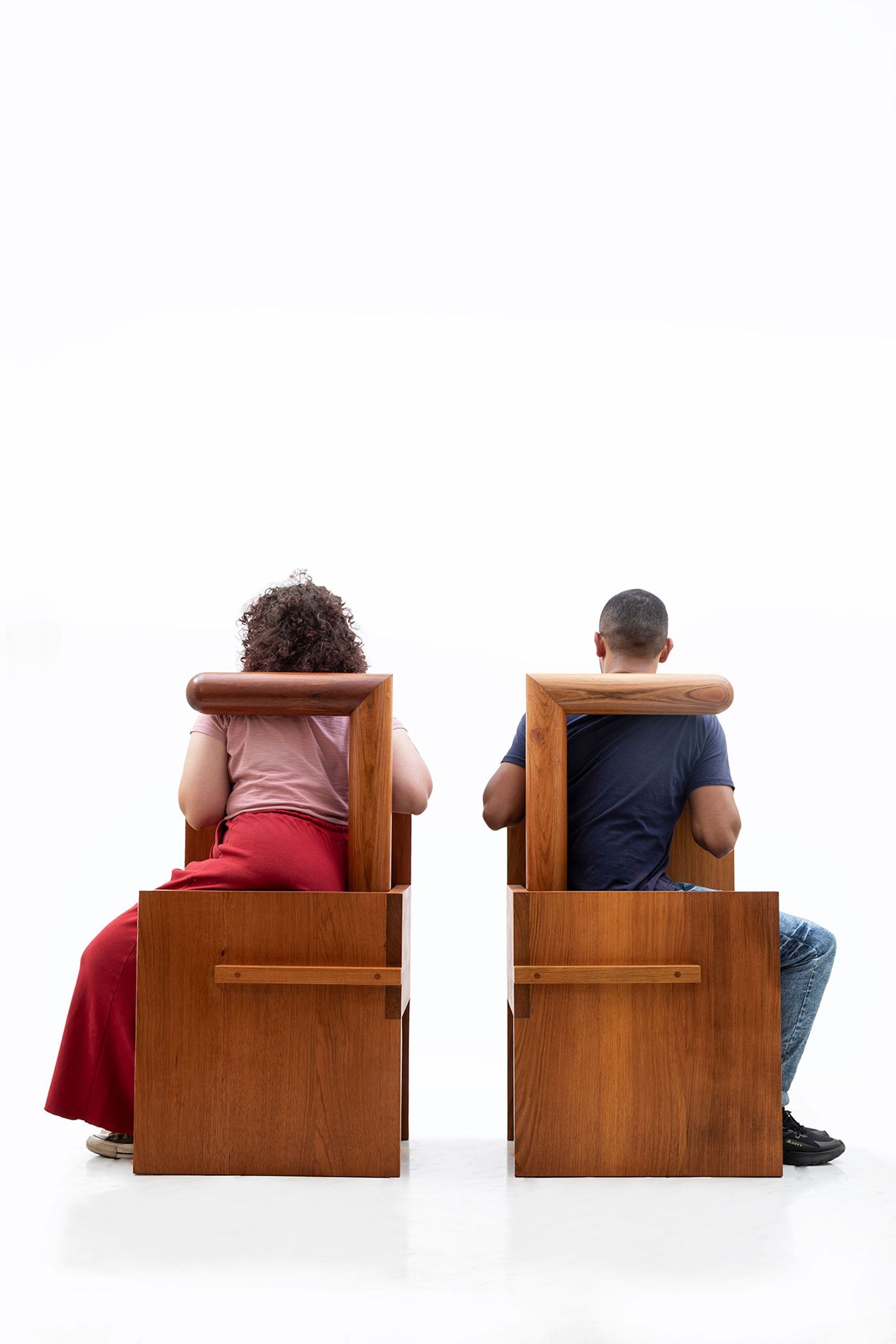
Lord of the Fishes. Photography by Ruy Teixeira.

Trophy Hammock. Photography by Ruy Teixeira.
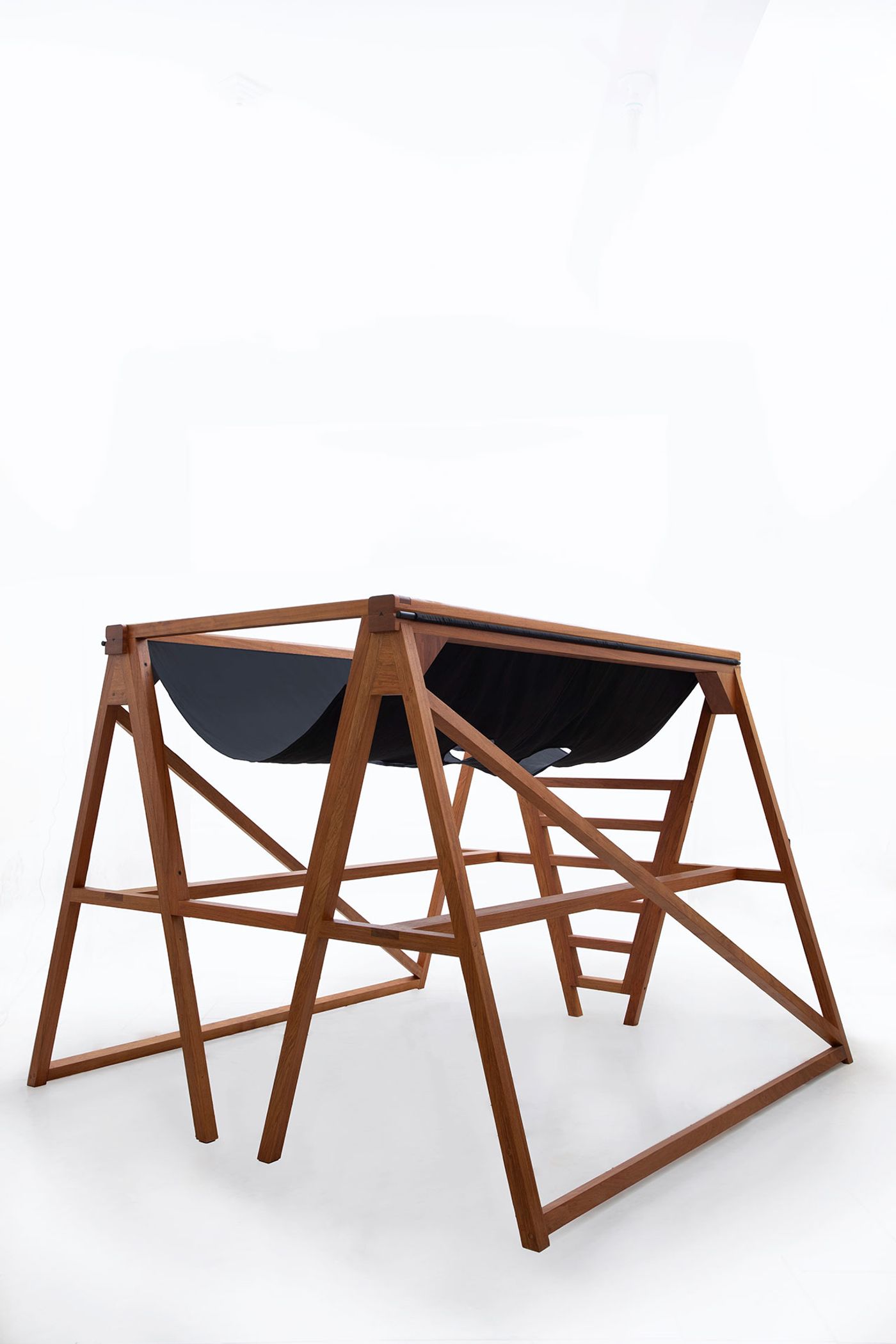
Trophy Hammock. Photography by Ruy Teixeira.
The “Trophy-Hammock”, an inverted hammock where instead of lying on your back, you lie on your front with your head, arms and legs dangling through the holes, explores the fear of heights and the fear of falling as a metaphor for the feelings evoked by current geopolitical crises. “Procrustes”, which takes its name from the Greek myth of Procrustes, a robber who claimed the lives of the wayward travellers who didn’t perfectly fit in his iron bed by cutting off protruding parts, forces visitors into a brace position in reflection of living in a time of global catastrophes. It’s not all gloom and doom though; “Push-Me-Pull-You”, a type of seesaw where you sit with your back to one another, tests your ability to engage with someone without looking at them, and by extension warns of the dangers of miscommunication in geopolitics, while “Centipede”, where three people sit on top of each other, speaks of the necessity to trust people you don’t know as a way of overcoming our fears by working together. In the end, however uncomfortable the experience that ANTIFURNITURE offers, ultimately there’s always some lesson to be learnt and just as importantly, some fun to be had.

Procrustes. Photography by Ruy Teixeira.
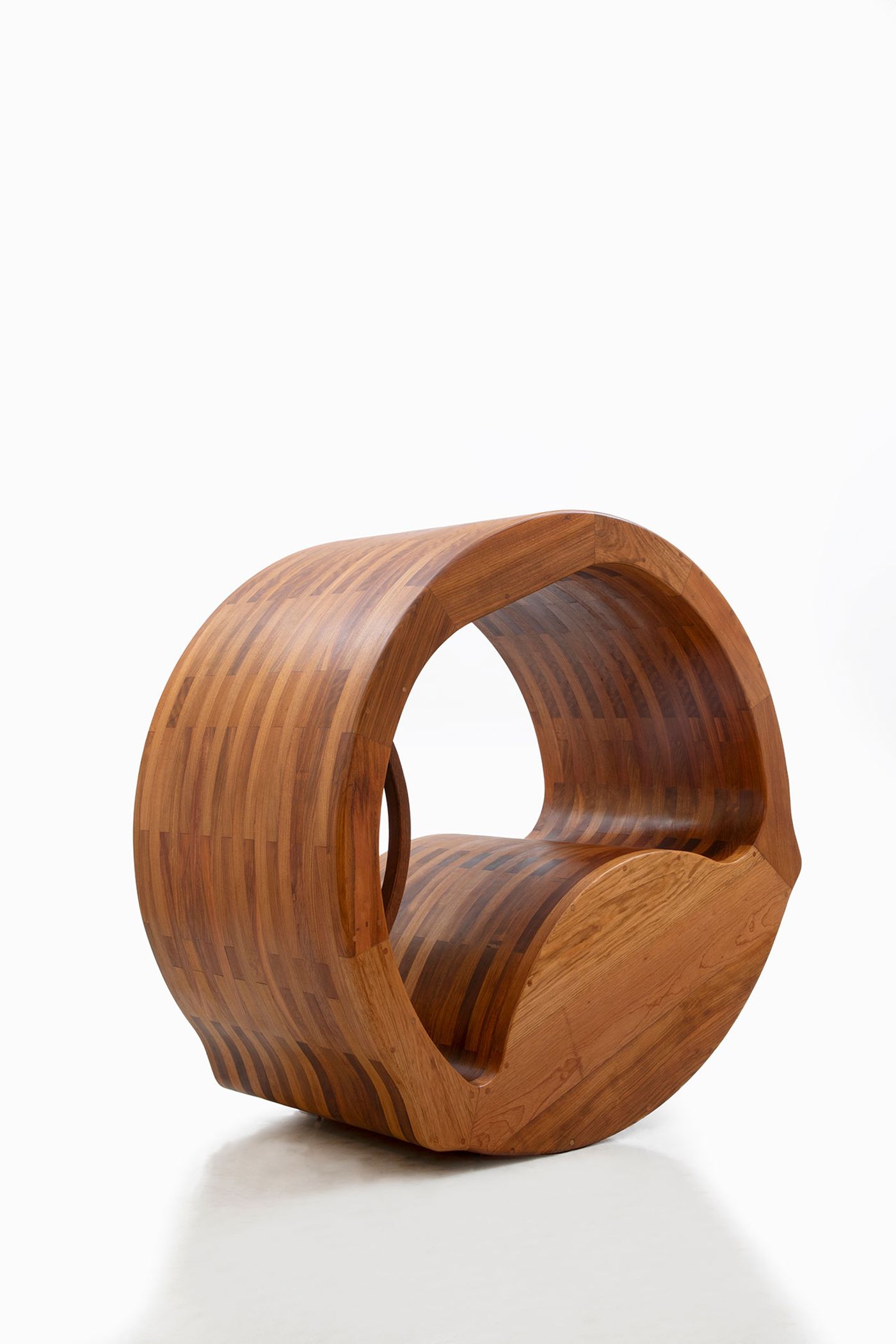
Procrustes. Photography by Ruy Teixeira.
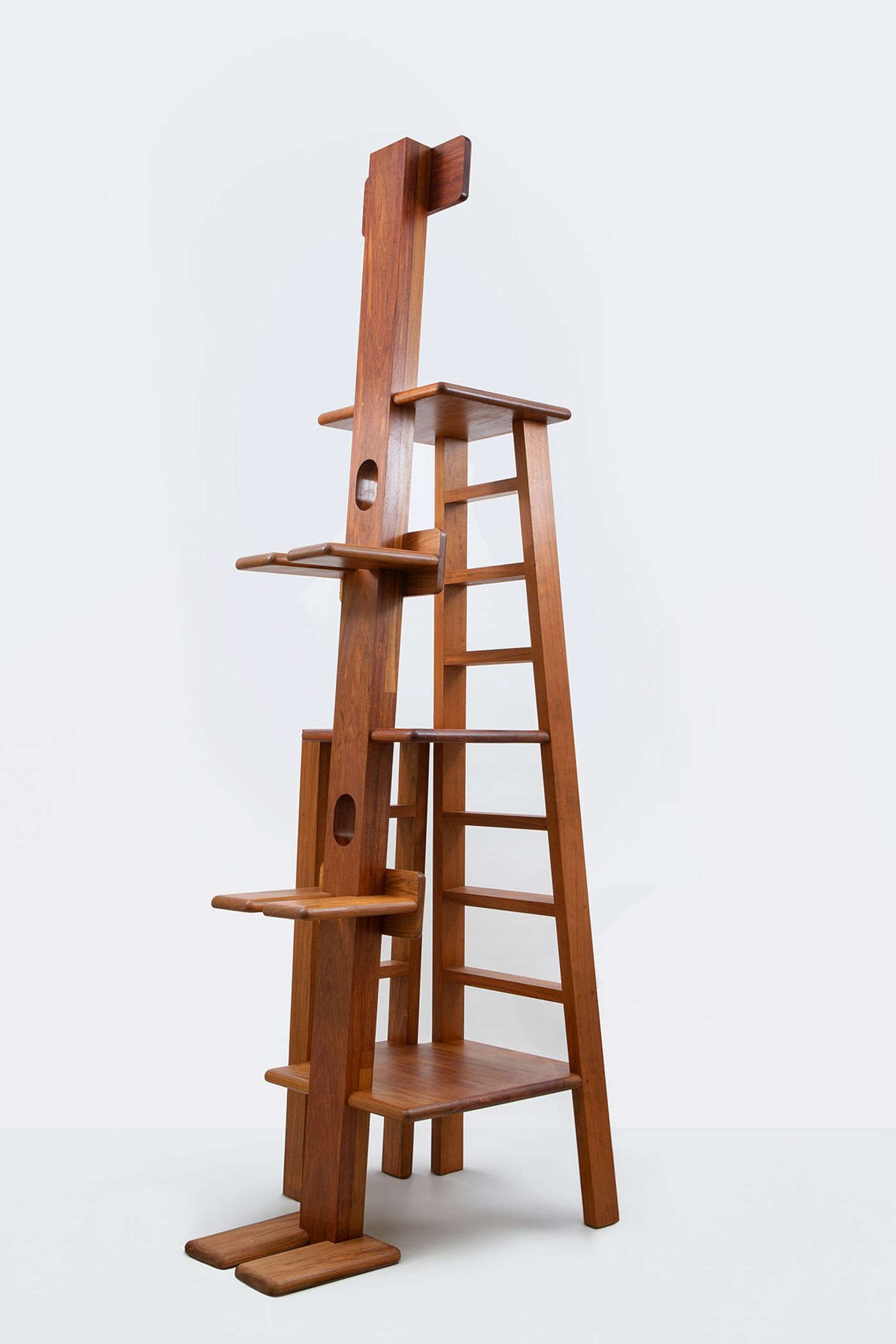
Centipede. Photography by Ruy Teixeira.
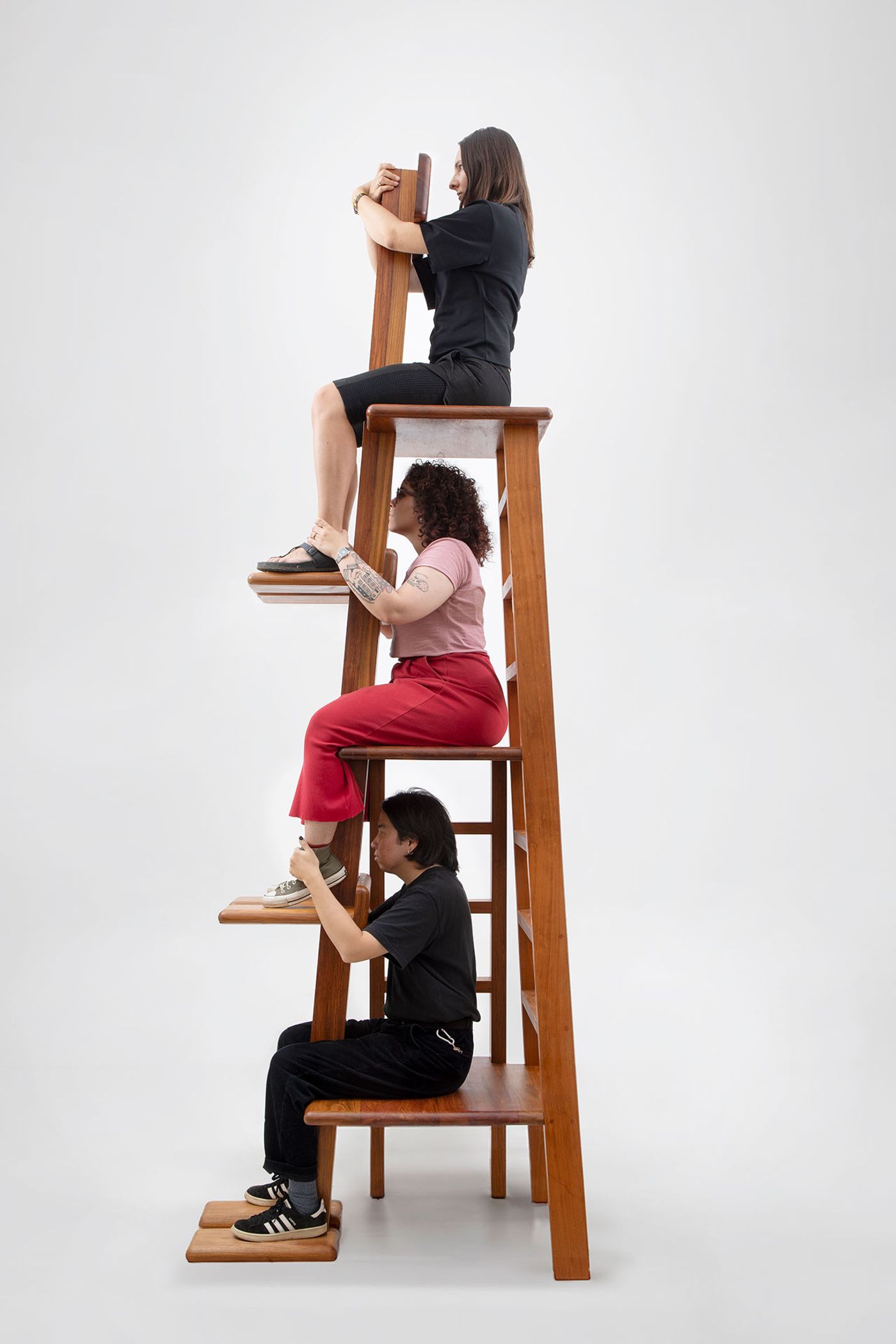
Centipede. Photography by Ruy Teixeira.

